PDD Geoguessr Challenge #15: Duluth’s Sister Cities – Växjö, Sweden
Växjö – pronounced Vequa according to the YouTube videos I watched — has been Duluth’s sister city since 1987. With a population of 80,000, it’s approximately the size of Duluth. Also like Duluth, it has a significant student population, with Linnaeus University just outside the city center. In 1991, Växjö became the first city in the world to set a goal of becoming fossil fuel-free. In 2007, it won the Sustainable Energy Europe Award for being the greenest community in the EU.
Duluth maintains an active relationship with Växjö. In the Almanac North segment below, WDSE WRPT producer Megan McGarvey talks about that relationship and her own trip to Växjö.
There are a number of videos online showing the main sites of Växjö. To provide an overview here, I’ve chosen one that I liked for two reasons: (1) it’s short and (2) it shows some of ordinary life in Växjö, but with a drone and set to very dramatic music.
If you would like to explore Växjö from ground level without dramatic music, the Geoguessr challenge provides an overview of some of the more memorable places in the city. Each round has a time limit of 5 minutes.
PDD Geoguessr Challenge #15: Duluth’s Sister Cities – Växjö, Sweden
How to Play Geoguessr
GeoGuessr can be played on a laptop or desktop and on Android or IoS mobile devices with the GeoGuessr app. Just click on the link that fits how you play and create an account to start playing.
Every game consists of five locations based on a theme chosen by the game creator. You are shown a Streetview image stripped of all the informational labels that are normally overlayed onto the image. Unless the challenge specifically restricts it, you can move around and look for clues like street signs and business names to find out where you are. The image below shows a basic overview of the Geoguessr screen layout and controls.
Once you think you know the location — or are nearly out of time — you use the inset map to place your marker where you believe the round started. After you hit “Guess,” you will see how close you were to the correct location and how many points your guess earned. The closer you are to the location, the higher your score, with a maximum score of 5,000 points. On a map that covers a small area, like the Gary-New Duluth neighborhood, being off by a few blocks will cost you a lot of points. On a map that has locations from around the world, you will get nearly all the points just for finding the right city. The maximum error for a perfect score also changes by map size, but in general if you are within 50 feet (15 meters) you will always get the full 5,000 points.
Not often, but every now and then, GeoGuessr gets a little buggy. If the underlying Streetview imagery has changed since the game was made, sometimes it repeats the last round, gives a black screen, or doesn’t allow a guess to be made. If that happens, please let me know and I’ll update the challenge.
At the end of the five rounds, an overview screen shows your score for each round in addition to your guessing time and how far off you were from the correct location. The correct locations and your guesses are also shown on a map and you can click on any of the round numbers to review the locations. Additionally, the final screen in a challenge will show how you rank compared to the top scorers of the challenge. When choosing your user name, keep in mind that your user name and score per round will be visible to other players of the challenge.
If you have feedback on this challenge or ideas for future challenges, please share them in the comments below.
Recommended Links:
Leave a Comment
Only registered members can post a comment , Login / Register Here


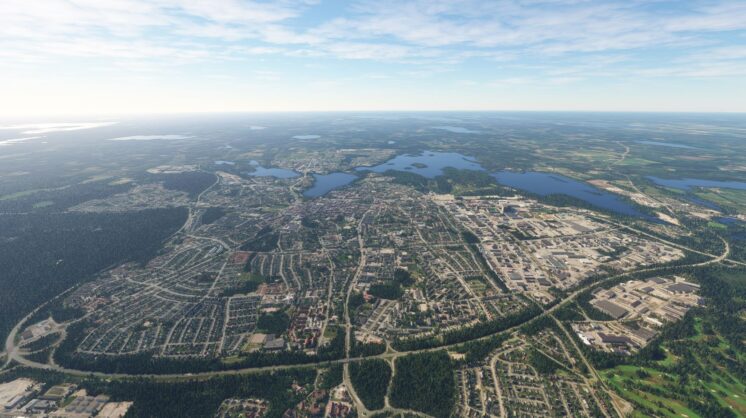
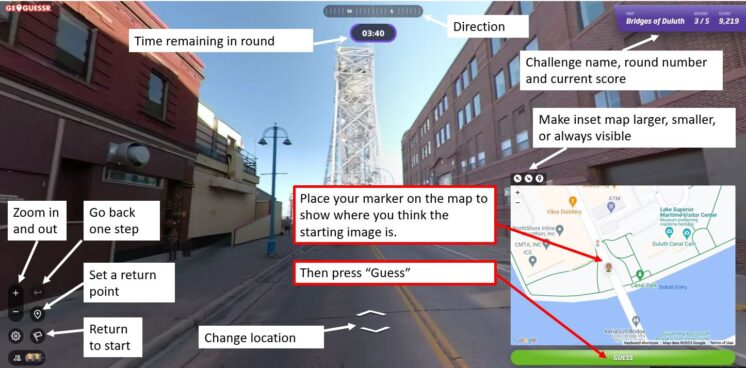
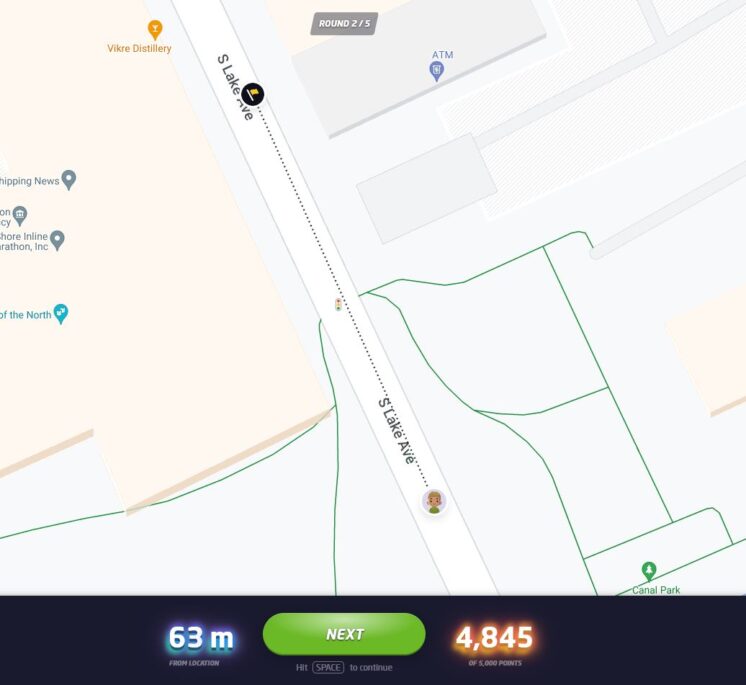
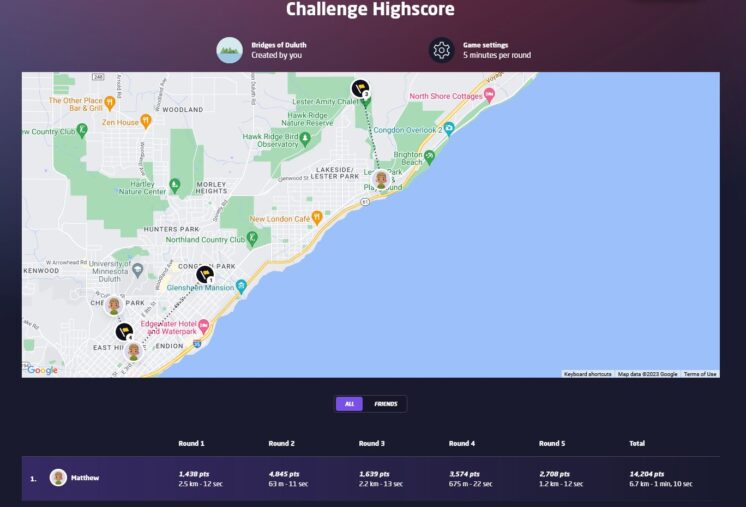

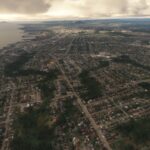
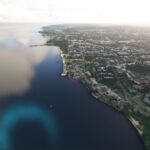
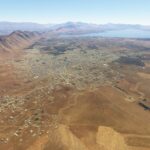








No Comments